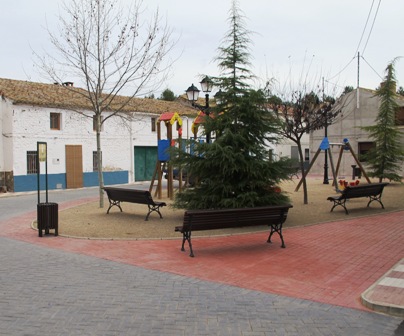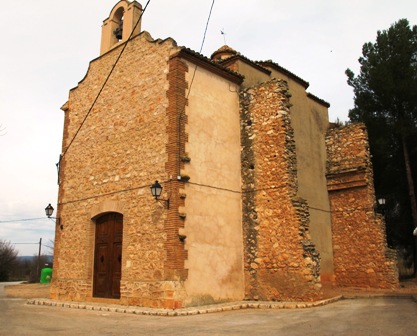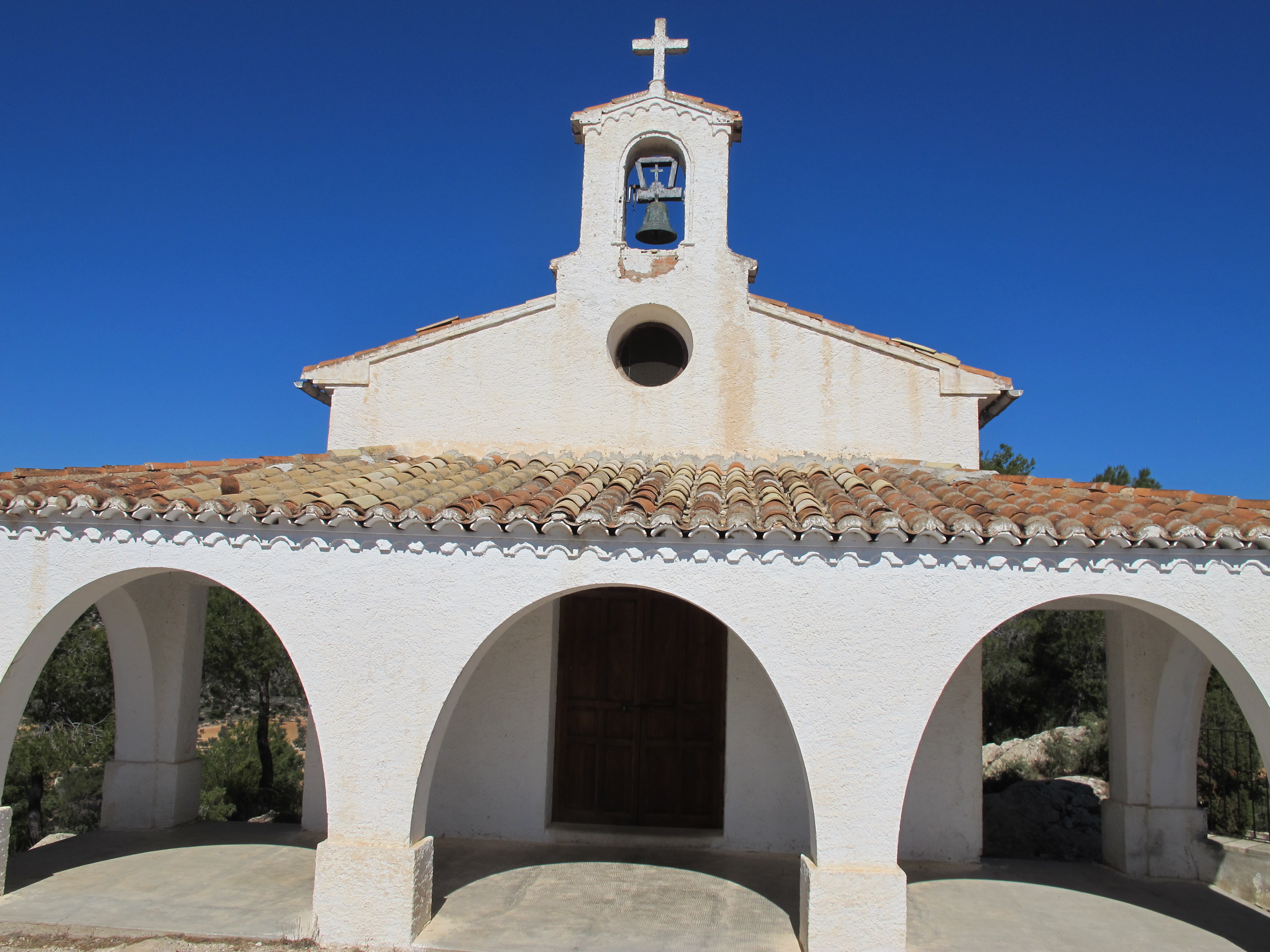The Willow district

The Willow district
El Salse (in Valencian El Salze, “the willow”), is a hamlet of Beneixama. Its population registered in 2009 was 19 inhabitants (INE) It is located on the right bank of the Vinalopó river next to the old railway line V.A.Y. currently converted into the Greenway of Chicharra. Formerly had school, several stores and even an incipient pottery industry, which disappeared with the loss of population: if in 1970 had 93 inhabitants, these were 15 in 2003 and 19 in 2009. This phenomenon was due to the rural exodus, which converted the most of the homes in second homes. Account, however, with pedáneo mayoralty. Its main monument is the hermitage of San Vicente Ferrer, patron of the place. It contains frescoes from the late 19th century and has been recently restored. On the Monday of the second week of Easter, the festivities are celebrated in honor of San Vicente Ferrer.
Location on the map
Pedanía El Salze
Ermita de San Vicente Ferrer (El Salze)

Ermita de San Vicente Ferrer (El Salze)
The Hermitage was built in honor of San Vicente Ferrer, being this the patron of the hamlet of “El Salze”. On the Monday of the second week of Easter the celebrations in honor of San Vicente Ferrer are celebrated
Location on the map
Ermita San Vicente Ferrer
Refugio Municipal de “Rita”
Refugio Municipal de “Rita”
l Refugi Municipal de “Rita”, es troba en ple cor de la muntanya.
CONDICIONS ÚS PRIVATIU PER TEMPS DETERMINAT DE LES INSTAL·LACIONS DELS REFUGIS MUNICIPALS DE BENEIXAMA.
La base imposable d’aquesta taxa es fixa prenent com a referència el valor que tindria en el mercat la utilitat derivada de la utilització privativa de les instal·lacions dels Refugis.
La reserva dels Refugis Municipals, portarà implícit l’ingrés previ en concepte de fiança de 120,00 €, per a respondre del bon ús i manteniment de les instal·lacions. Un cop comprovades l’estat de les instal·lacions es retornaran al sol·licitant.
Si el nombre de persones multiplicat per la seva quota no arriba 30,00 € / dia, es cobrarà aquesta quantitat com a quota mínima. Per contra, si el nombre de persones multiplicat, per la seva quota supera els 150,00 € / dia, es cobrarà aquesta última quantitat com a màxima. En el moment de fer la reserva en qualsevol dels Refugis Municipals, els sol·licitants hauran d’abonar una quota de 30,00 €.
CUOTA
|
TRAMOS |
Refugio de “Rita” Refugio de “La Talaeta” Albergue de “La Estación” |
Albergue de “El Salze” |
|
< de 7 años |
0,00 € |
0,00 € |
|
>de 7 años, sin pernocta |
3,00 € persona/día |
4,00 € persona/día |
|
>de 7 años, con pernocta |
4,00 € persona/día |
5,00 € persona/día |
|
Albergue/Refugio |
Literas / capacidad pernoctar |
Suministro eléctrico |
| Refugio de “La Talaeta” |
20/25 con saco de dormir |
NO/placas solares |
| Refugio de “Rita” |
25/30 con saco de dormir |
NO/placas solares |
| Albergue de “La Estación” |
18 literas |
NO/placas solares |
| Albergue de “El Salze” |
14 literas |
SI |
Per reservar el refugi s’haurà d’emplenar la SOL·LICITUD ALBERGS
S’estableixen reduccions en les quotes per a associacions sense ànim de lucre, associacions de minusvàlids, i altres col·lectius, per a més informació trucar al telèfon 965822101 o per correu electrònic ayuntamiento@beneixama.es.
Hermitage of San Isidro Labrador

Hermitage of San Isidro Labrador
This place is called in topographic maps like “El Racó de la Atalaya”, although popularly known as “La Talaeta”. We are on a plateau from where you can see the wide Valle del Río Vinalopó. The Hermitage of S. Isidro, was built in the mid-20th century.
It is worth the climb to this hermitage, allowing us to enjoy a wide panoramic view of the valley and the different villages that are located in this part of the Vinalopó river route. We contemplate a large landscape divided into small fields of cultivation that will offer us different tones according to the time of the year in which we are.
La Talaeta is located at 740 m. of altitude, and at a distance of 2 km. of Beneixama. In 1948, the Brotherhood of Farmers and Farmers decided to build a hermitage, in accordance with the plan of the architect D. Manuel Puig Pastor. It is a simple rectangular chapel preceded by a porticoed atrium and covered in two waters or double slope, topped by a bell buckle where the bell is found, which was donated by the village’s Cooperativa Almàssera.
In 1951, the first stone was placed in the middle of a festive atmosphere, ending the works in 1953. Since the hermitage was inaugurated, every year there is a pilgrimage to coincide with the festivity of San Isidro, where the neighbors of Beneixama go to this place to enjoy a day outdoors.
Since the creation of the Comparsa de “Llauradors” in 1971, the festival has been gaining importance, thanks to the efforts that this association realizes in its organization, going to the romería with its festive dresses, which undoubtedly has given a major highlighting the festival of San Isidro.
Location on the map
Place La Talaeta

Place La Talaeta
Place in the middle of nature where different acts of the Festivity of S. Isidro Labrador are celebrated, being celebrated the weekend next to the Festival of S. Isidro.





